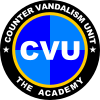
Because anyone can edit Wikipedia, not all the edits that are made are constructive - some, in fact, are deliberately disruptive and need to be reverted. Please have a read of this essay and this guideline, then answer the questions and perform the tasks below. There's no time limit for this, it's more important that your work in this area be accurate than fast. If you aren't sure whether it's vandalism or not, it probably isn't.
Good faith and vandalism
edit- Please explain below the difference between a good faith edit and vandalism, and how you would tell them apart.
- Good faith edits, are edits that are submitted with the best of intentions but, are ultimately unhelpful. Vandalism, on the other hand, is the submission of edits that are created with the intent to disrupt the article.
- That's pretty much a textbook answer.
- Please find and revert three examples of good faith but unhelpful edits, and three examples of vandalism (you can use previous examples from your edit history if you wish). Please warn the editors with the correct template and give the diffs of your revisions below.
Good faith edits
edit- https://en.wikipedia.org/w/index.php?title=Ada_Rehan&diff=594137220&oldid=594137025
- https://en.wikipedia.org/w/index.php?title=Sevenoaks_Chronicle&diff=594139049&oldid=594138874 I assumed the removal of these tags is in good faith because, the user is new and may have removed the my accident.
Vandalism
edit- https://en.wikipedia.org/w/index.php?title=Anesthesiologist&diff=593985915&oldid=593985830# That edit appeared to be vandalism, however, it did not appear blatant. So, in an effort to assume good faith I gave the user a test edit warning only.
- https://en.wikipedia.org/w/index.php?title=Ron_Martin_(businessman)&diff=594039756&oldid=594038480
Warning and reporting
editPlease answer the following questions
- Why do we warn users?
- Users should typically be warmed first, because when assuming good faith (which is something I must do!) I come to the conclusion that the user might not understand that their edits are viewed maliciously. They might need a warning in order to understand that what they are doing is unwelcome and unwanted.
- That's one reason, but there are a couple of other important reasons for placing warnings.
- When would a 4im warning be appropriate?
- What should you do if a user who has received a level 4 or 4im warning vandalises again?
- You can report them at the AIV (Administrator intervention against Vandalism)
- You most certainly can.
- Please give examples of three warnings that you might need to use while vandal patrolling and explain what they are used for.
- Find an edit which could be a test edit and revert it. Warn the user with the most appropriate template, then post the diff below.
- https://en.wikipedia.org/w/index.php?title=Concón&diff=593792140&oldid=593792019
- Yes, could indeed have been a test, and you gave the appropriate warning.
- Report 2 users to AIV and post the diffs below. Be sure to follow the guidelines and only report users where necessary; do not report simply for the sake of this task.
Dealing with difficult users
edit- Why do we deny recognition to trolls and vandals?
- How can you tell between a good faith user asking why you reverted their edit, and a troll trying to harass you?
- Usually, a lot can be discovered by simply examining the tone of the user. If they come to your talk page and ask "Can you please explain why you reverted my edits?" I would consider that to be a user who is simply curios as to why I have reverted their edits. If a user comes to my talk page and says "YOU RUINED THE ARTICLE BY TAKING AWAY MY EDITS IM REPORTING YOU TO AN ADMIN" I can assume that the user either is a troll, or simply does not want to listen to anything I have to say.
Protection
edit- In what circumstances should a page be semi-protected?
- In case of persistent vandalism from non-confirmed users and IP editors or, if the page is in the User namespace and the user which it belongs to requests its protection.
- In what circumstances should a page be fully protected?
- Correctly request the protection of one page (semi or full); post the diff of your request (from WP:RPP) below.